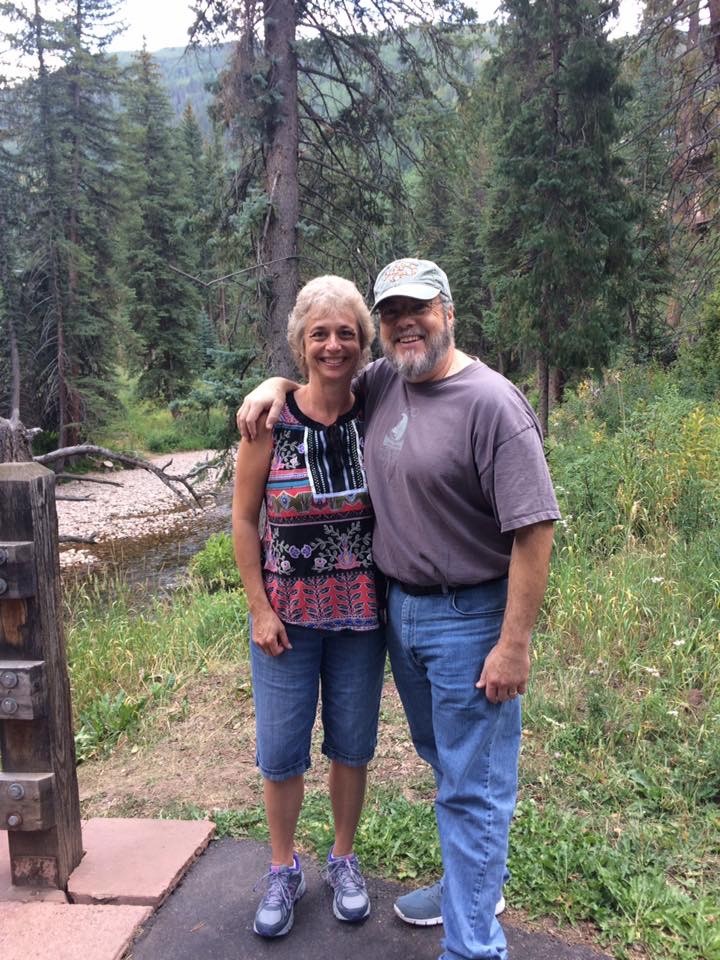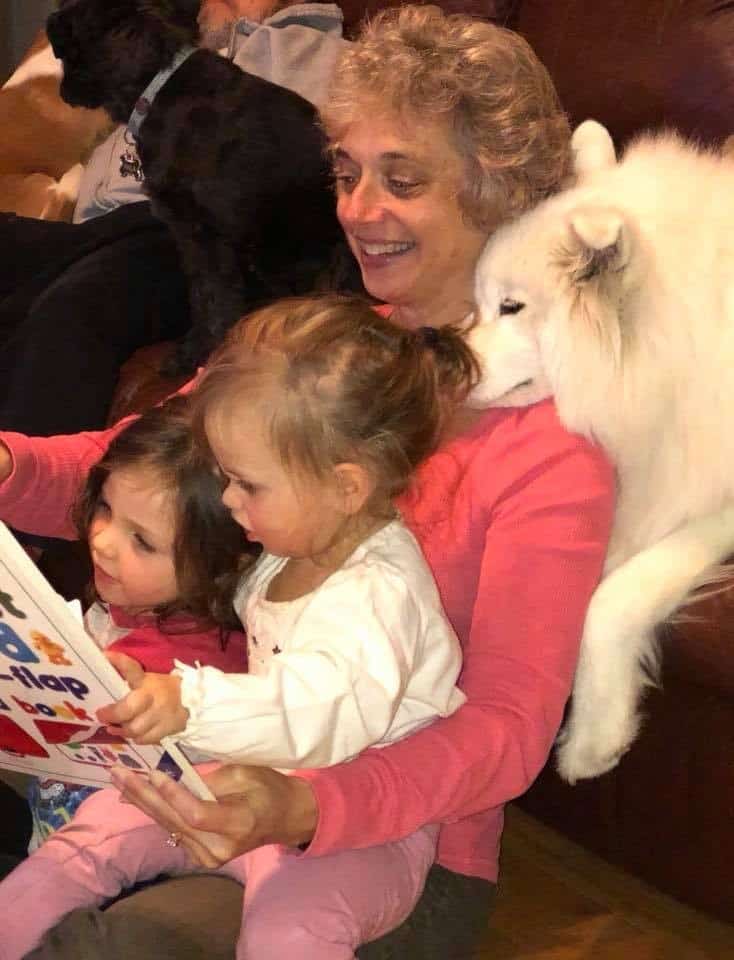Robin G. grew up speaking English and learning Spanish in mainstreamed schools, living most of her life wearing hearing aids. Being unsure of cochlear implants at first, she finally decided to get implanted after a realization at work that she needed to better hear the world around her. Her decision not only took her to new levels of confidence and higher self-esteem, but it also opened up new career conveniences and opportunities. Check out Robin’s inspiring story:
“I was born in the midst of the rubella epidemic in New York City in the 1960s. No one suspected at the time that my mother had the rubella virus while pregnant with me, nor that I was born deaf. At 6 months old, my parents suspected I was not hearing things. I was a very visually responsive baby, so it was tricky for them to figure this out. They ended up banging pots and pans over my head while I napped, and then learned that I could not hear.

After months of visiting different doctors, they found an audiologist who was willing to test me at the age of 11 months. She did not have experience with testing infants, nor was she confident in her results, since I tested in the range of severe to profound hearing loss. I was fitted with a body-worn hearing aid at 12 months of age and began speech therapy twice a week. My mother resigned from her teaching job to work with me, utilizing strategies at home that the speech therapist used.
I was always mainstreamed in school with support, although sometimes I was the only deaf child in my class/school. I began my formal education in Puerto Rico at a bilingual Spanish/English school for kindergarten and first grade. I eventually was able to ‘graduate’ to behind-the-ear hearing aids at the age of 16, which greatly boosted my self-esteem! No more ugly cords snaking out from under my hair! No more lump in the middle of my chest from the body-worn aid! Best of all, I had a hearing aid for EACH ear!
I eventually was able to ‘graduate’ to behind-the-ear hearing aids at the age of 16, which greatly boosted my self-esteem! No more ugly cords snaking out from under my hair! No more lump in the middle of my chest from the body-worn aid! Best of all, I had a hearing aid for EACH ear!
Opportunity for a cochlear implant
While an undergraduate at University of Colorado, Boulder, I was approached by the Departmental Chair of the Communication Disorders and Speech Sciences program around 1984. He thought I would be the perfect candidate for a cochlear implant. When I heard it involved surgery, I immediately responded with a ‘thanks, but I am doing just fine as it is.’ I truly believed I was since I did not know any differently… From that moment on, every audiologist I worked with asked me if I would consider a cochlear implant.
It was not until 2003 when I entertained the possibility of MAYBE getting a cochlear implant. I had been working as an early interventionist with families of young children who are deaf or hard of hearing ages 0-3. A few of these children had recently received a cochlear implant. Instead of identifying the sounds in the environment for these little ones during our activities, they began to tell me about the sounds they were hearing…I could not hear those sounds! The phone ringing in another room, a bird chirping out in the backyard, a kitten crying across the room and even a car beeping outside. I had to verify with the parent that these sounds were actually happening. I immediately knew that in order to best help my families, I needed to be able to hear those sounds!
After much research and collaboration, I bit the bullet and got a Cochlear Implant for my left ear in March 2006. I chose Cochlear for several reasons. I LOVED their cochlear implant reliability record! 1 2 3 4 5 That was paramount for me. I also loved the feel of the Cochlear™ Nucleus® Freedom™ Sound Processor on my ear, as well as the processor functionality.
Successful surgery and activation
Surgery and activation went well. Oh, what a noisy world we live in! It did not take long for me to start hearing many sounds I had NEVER heard in my entire life (and had either only read about them or heard about them from others). With the help of my family, friends and an AVT therapist, I began to learn what all of these new sounds were. The aspen leaves quaking in the breeze, the fizzling sound that soda bottles make when you open them, crickets singing, being able to hear people coming down the carpeted stairs, to name a few.
How I loved not having to stand by the oven while baking something for fear of over baking things because I could not hear the timer beeping! Having had severe hearing loss for most of my life, understanding speech was (and still is) a work in progress, 12 years later. However, there were other noticeable benefits. My self-esteem and confidence soared and my ability to converse in Spanish improved. I no longer need to rely solely on interpreters at conferences or in large group meetings for work. People shared that the clarity of my speech had improved as well.
Having my Kansos has given me a new lease on life.
Going bilateral and getting new technology
In June 2016, I decided to go bilateral! I received the Cochlear™ Kanso® Sound Processor a few months after activation. I immediately fell in love with the Kansos! NOTHING on my ears anymore for the first time in my life! The dual microphones were AWESOME and the sounds were crisper! I am still working on localization, but the dual microphones help me figure out where sounds are coming from! The cool accessories that come with these, such as the Cochlear™ True Wireless™ Mini Microphone 2+ and the True Wireless Phone Clip, stream sound directly into the processors! The Mini Mic is amazing for being able to stream movies or music and is especially useful when at conferences too!
Having my Kansos has given me a new lease on life. I love cooking, traveling, going for hikes, exploring our beautiful country/world when the opportunity arises and spending time with my husband and our two adult children and dogs. I do not think twice about approaching people or talking with them when I am out and about, and I am much more confident in conversing with others who are not native English speakers. I am an active participant in group conversations, and I recently presented at a national conference for the first time last month. I look forward to continuing to grow as an active community participant and professional and seeing where Cochlear takes me next!”
Are you ready for a change in your hearing? Learn more about cochlear implants and take the next step toward changing your life at www.Cochlear.com/US/CochlearImplants.
- Cochlear Americas [Data on file] – Guidepoint Market Share Data, 2018 April.
- Cochlear Annual Report, 2017 August [Internet: pdf document]. 2017 August [cited 2018 April 18]. Available from: www.cochlear.com.
- Cochlear Nucleus Implant Reliability Report. Volume 16 | December 2017. D1175804. Cochlear Ltd; 2018.
- Comparing latest generation implant reliability among manufacturers. Cochlear™ Nucleus Profile that has a Cumulative Survival Percentage (CSP) of 99.82% over 4 years compared to MED-EL SYNCHRONY implant that has a CSP of 98.53% over 3 years and HiRes 90k Advantage (by Advanced Bionics) has a CSP of 99.45% over 4 years. See reliability reports above. Data may be subject to updates by each manufacturer.
- Comparing latest generation implant reliability among manufacturers for children. Cochlear™ Nucleus Profile that has a Cumulative Survival Percentage (CSP) of 99.66% over 4 years for children compared to HiRes 90k Advantage (by Advanced Bionics) that has a CSP of 99.02% over 4 years. MED-EL SYNCHRONY do not report implant reliability in children. See reliability reports above. Data may be subject to updates by each manufacturer.
